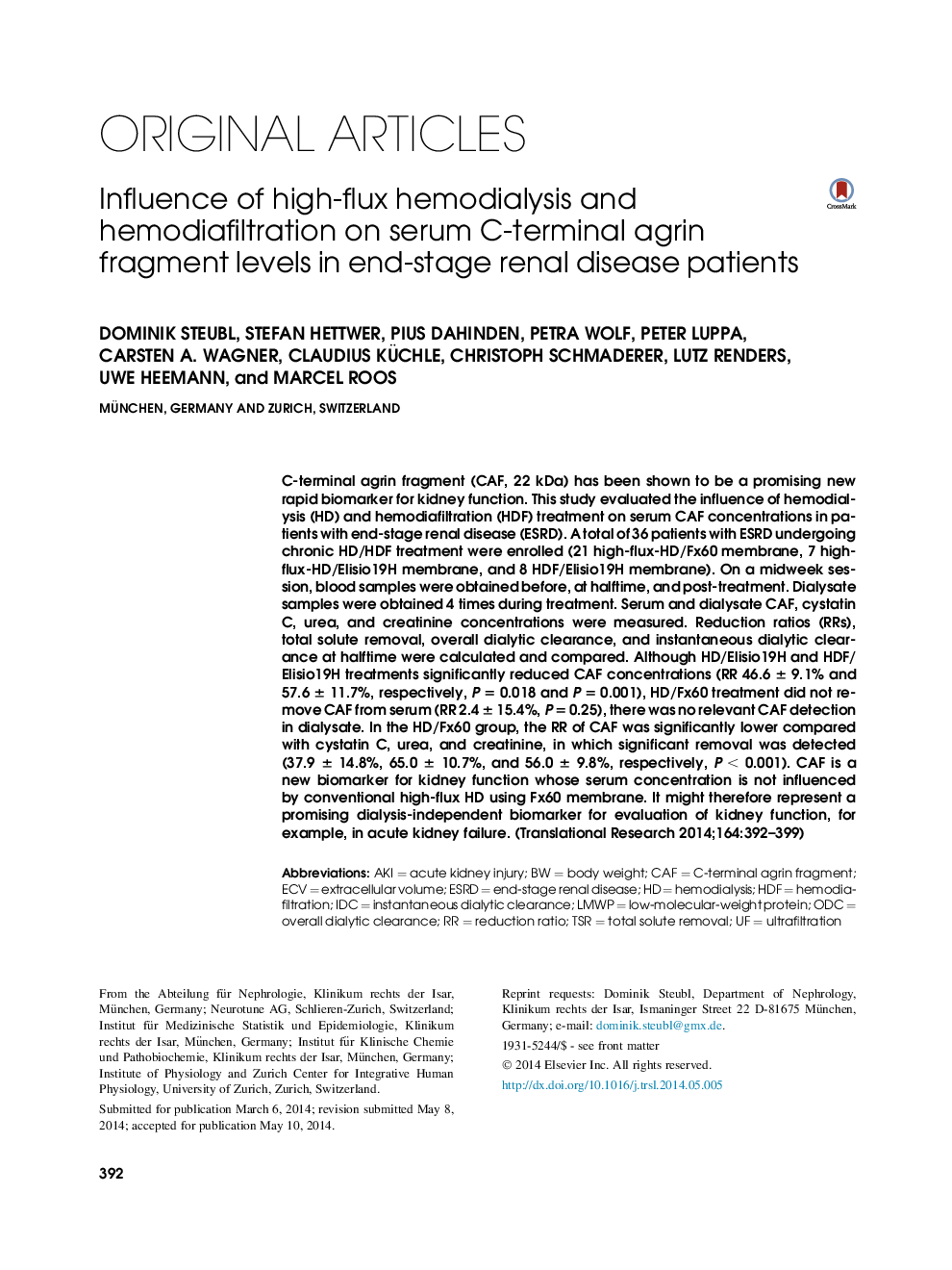| Article ID | Journal | Published Year | Pages | File Type |
|---|---|---|---|---|
| 3840387 | Translational Research | 2014 | 8 Pages |
C-terminal agrin fragment (CAF, 22 kDa) has been shown to be a promising new rapid biomarker for kidney function. This study evaluated the influence of hemodialysis (HD) and hemodiafiltration (HDF) treatment on serum CAF concentrations in patients with end-stage renal disease (ESRD). A total of 36 patients with ESRD undergoing chronic HD/HDF treatment were enrolled (21 high-flux-HD/Fx60 membrane, 7 high-flux-HD/Elisio19H membrane, and 8 HDF/Elisio19H membrane). On a midweek session, blood samples were obtained before, at halftime, and post-treatment. Dialysate samples were obtained 4 times during treatment. Serum and dialysate CAF, cystatin C, urea, and creatinine concentrations were measured. Reduction ratios (RRs), total solute removal, overall dialytic clearance, and instantaneous dialytic clearance at halftime were calculated and compared. Although HD/Elisio19H and HDF/Elisio19H treatments significantly reduced CAF concentrations (RR 46.6 ± 9.1% and 57.6 ± 11.7%, respectively, P = 0.018 and P = 0.001), HD/Fx60 treatment did not remove CAF from serum (RR 2.4 ± 15.4%, P = 0.25), there was no relevant CAF detection in dialysate. In the HD/Fx60 group, the RR of CAF was significantly lower compared with cystatin C, urea, and creatinine, in which significant removal was detected (37.9 ± 14.8%, 65.0 ± 10.7%, and 56.0 ± 9.8%, respectively, P < 0.001). CAF is a new biomarker for kidney function whose serum concentration is not influenced by conventional high-flux HD using Fx60 membrane. It might therefore represent a promising dialysis-independent biomarker for evaluation of kidney function, for example, in acute kidney failure.
